What We Harness and How
Fossil-hydrocarbons come in the convenient form of a stock - material that you can hold.
In contrast, with many alternate energy generation methods, we harness a flow - a process that happens in real-time, like the sun shining or the wind blowing.
Fossil-hydrocarbons come ready-to-use. We need only to extract and refine them.
For alternative energy, although sunlight and wind are abundant and clean, the scale of industrial energy infrastructure will set the maximum extent to which we can harness them.
The fossil-hydrocarbon extraction and refinement steps still happen, and then we take fossil-fueled steps to prepare the “green” infrastructure: mining, manufacturing, shipping, trucking and installation.

Energy Elsewhere and Else-when
Furthermore, flows are less reliable than stocks. They’re intermittent. Solar panels and wind turbines often perform below their nameplate capacity. Therefore, civilization would require infrastructure redundancy - excess infrastructure to generate more than humans need at a certain place/time, for use at other places/times, wherever/whenever performance is suboptimal.
You can hold coal in your hand. You can pump oil through a pipeline or put it in a barrel on a truck. Alternative energy requires its own suite of transmission and storage technologies. The Climate North Star Maximum Global Speed Climate Rescue Plan (page 21) calls for 2.5x current grid capacity. But the US electrical grid is already doing poorly.
To create batteries and additional power lines, civilization will again undertake the same process of fossil-hydrocarbon extraction and fossil-powered mining, manufacturing and transport.

Energy Form: Electricity versus Combustion
Fossil-hydrocarbons can power a combustion engine *or* generate electricity. Alternative energy technologies *only* generate electricity.
81% of our human empire runs on combustion: mining, harvesting, construction, manufacturing, waste management, trucking, aviation and militaries. As the industrial era proceeded, we didn’t anticipate that civilization would eventually need to be wholly compatible with electricity.
The extent to which we can redesign and physically replace the 81% of machinery that is combustion-powered will determine how much alternative energy can power our world. In some cases, electrification is challenging.
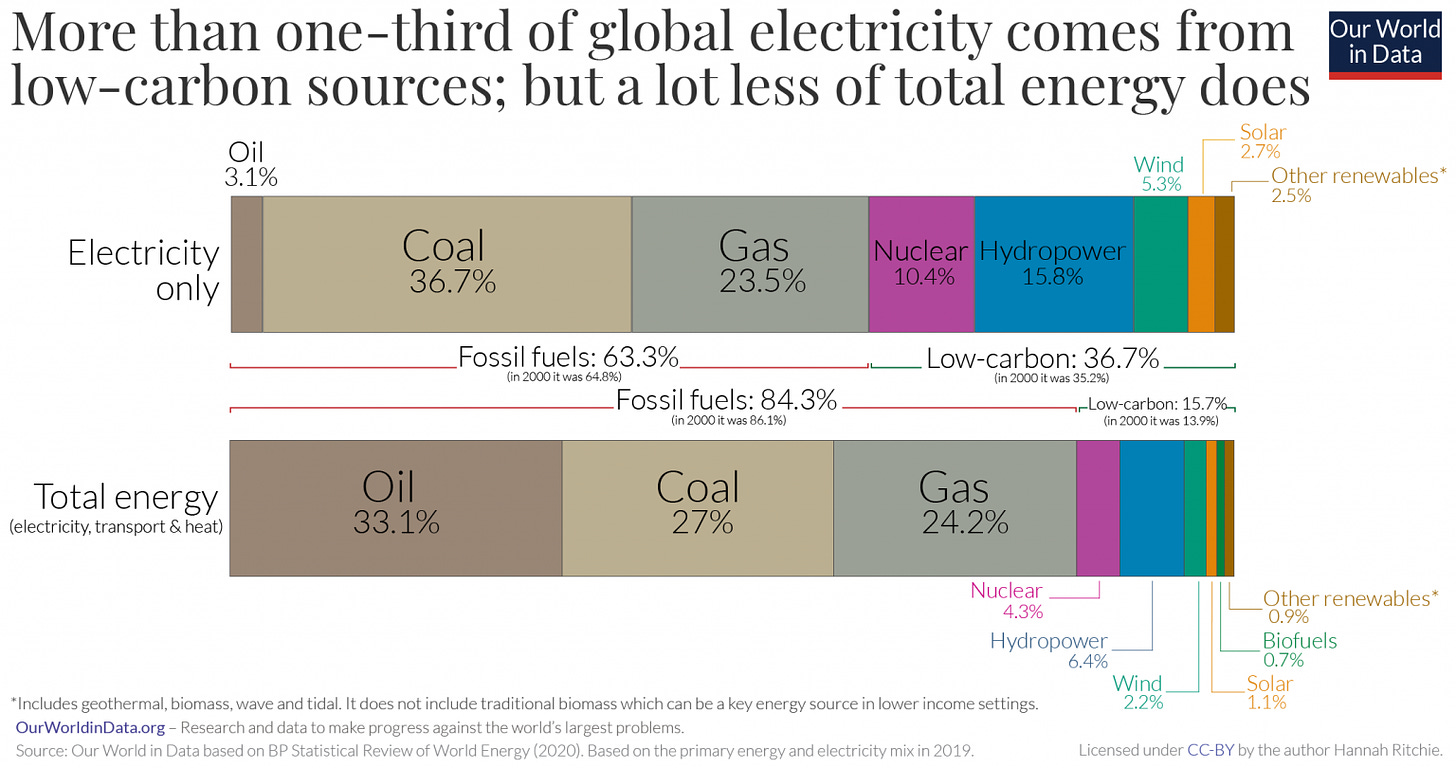
Contextual Hurdle #1: Industrial capacity limits
Liebig's Law states that “growth is dictated not by total resources available, but by the scarcest resource (limiting factor)”.
For example, discovery-to-production of minerals takes at least a decade. And to double the number of solar panels worldwide within however-many years, we need more mines, more mining equipment, more factories, more labor. That spare capacity doesn’t currently exist, sitting idle.
Simon Michaux asserts (e.g. in this 7-minute clip), that although individual countries and companies promise to transition to “green” energy, no one has calculated the raw material market’s ability to accommodate everyone’s plans at once.
According to Kurt Cobb, “The United States’ recent expanded claims to ocean sea-beds signals that the easy stuff has run out or will soon” – already, and we’ve hardly gotten started.
“There remain significant risks that mineral supplies may not keep pace with what would be needed to meet global climate goals.”
– International Energy Agency’s (IEA) 2021 World Energy Outlook Special Report
Contextual Hurdle #2: An uncooperative climate
Mining requires water, but 90% of all considered extraction sites correspond to below-average relative water availability.
Plus, it’s becoming common for extreme weather (and conflict) to halt manufacturing and trade

Contextual Hurdle #3: Competition
Olivia Lazard gave a TED Talk on competition for rare minerals and the era of “transition warfare”.
Fifty minerals are critical for multiple economic sectors. The US is at least 50% reliant on other countries for 31 of those minerals, and in over 12 cases, fully dependent.
China and Russia aim to control Africa’s rare earths supply
China limits its own exports of rare earths
"China becomes first country to recognize a Taliban ambassador" (2024)
"China, Afghanistan, and the Allure of 'Green Mineral Development'" (2023)
US escalates tech battle by cutting off China from semiconductors
Keeping Up with Replacement
Humanity is proposing a massive global expansion of “green” machinery and facilities, with enough redundancy to offset intermittency, plus power lines and batteries, and electricity-compatible versions of the 81% of machines that are currently combustion-powered.
This equipment has a 30-year lifespan, so as soon as (or maybe even before) we’ve finished rolling out Generation 1 worldwide, it would be time to start on refurbishment and recycling. We’d need Generation 2 ready to step in, along with its own back-up redundancy.
Therefore, we won’t see one year of intense buildout followed by 30 years of relaxation. We’ll be continuously dependent on capricious suppliers and waning fossil-hydrocarbon production. And since recycling isn’t 100% efficient, we’d always need to be extracting some amount of raw material and disposing of industrial-scale junk.
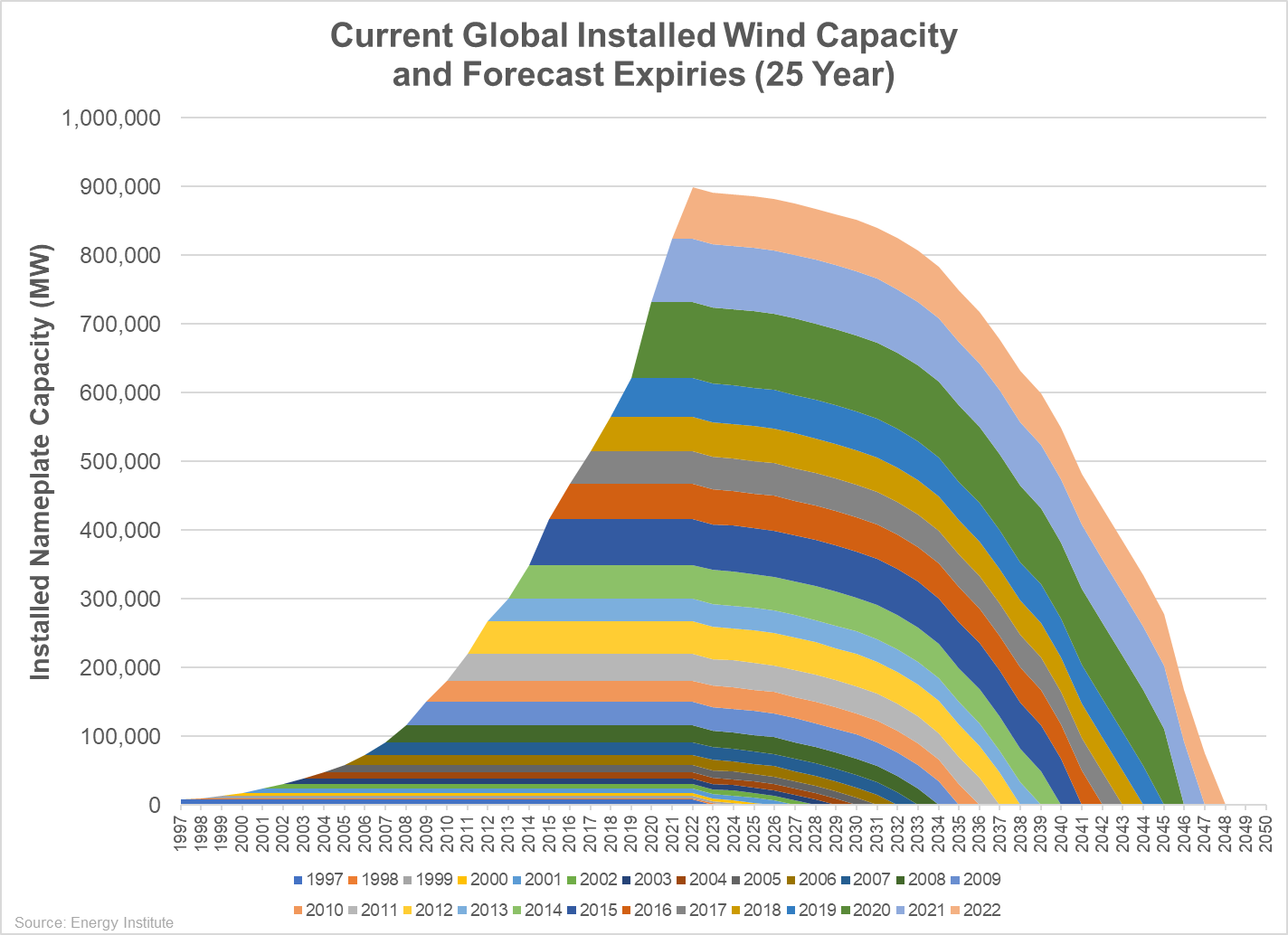
The videos below illustrate two different battery recycling methods: high-tech, high-volume (which has had to pause construction due to material costs) versus low-tech, low-volume.
The decline of fossil fuel supply will force humans to prioritize. In the USA’s case, for example, the current (early-2020s) situation is that 1% of the human population farms while 99% do something else. Machines cultivate and transport the food on which we depend for survival, so at least part of our (limited) fossil fuel supply will need to be designated for them, until more humans learn how to meet that need hands-on. The, the quantity of leftover fuel will determine whether our recycling operation looks like the first video or the second (humbler) one, which will determine our bandwidth to keep technology functional.
Material Products
Fossil-hydrocarbons are a material inputs for many products:
synthetic fertilizer, which yields half the calories that feed us 8+ billion humans
medical equipment and supplies - e.g. blood bags and syringes
pharmaceuticals - e.g. hormonal birth control
condoms
asphalt and tires (Although it’s possible to recycle asphalt, it would also be necessary to design electrified versions of all the machinery in the video and manufacture enough of them to renew roads around the globe.)
epoxy and industrial lubricants for wind turbine blades
power cables, of which we would need a few more for the #electrifyeverything project
When fossil-hydrocarbon supply decreases, the availability of these modern products will decrease until they’re nonexistent.
The Long View: Energy Descent
I’ve heard two references to the fact that, largely because we’re talking about infrastructure and not electronics, “green” energy equipment will not exhibit the exponential growth that technology typically does.
An episode of “Advancing Sustainable Solutions” covers this study on how “growth has already stabilized after the initial acceleration”
Joris van der Schot, when interviewed by Nate Hagens, comments “I'm not very optimistic about the speed at which we can actually transition because … the results are linear with the investment that you have to do”
It’s very likely that we’ll manage to build enough “green” energy infrastructure to only partially compensate for the decline in fossil-hydrocarbons, and then alternative energy too will wane.
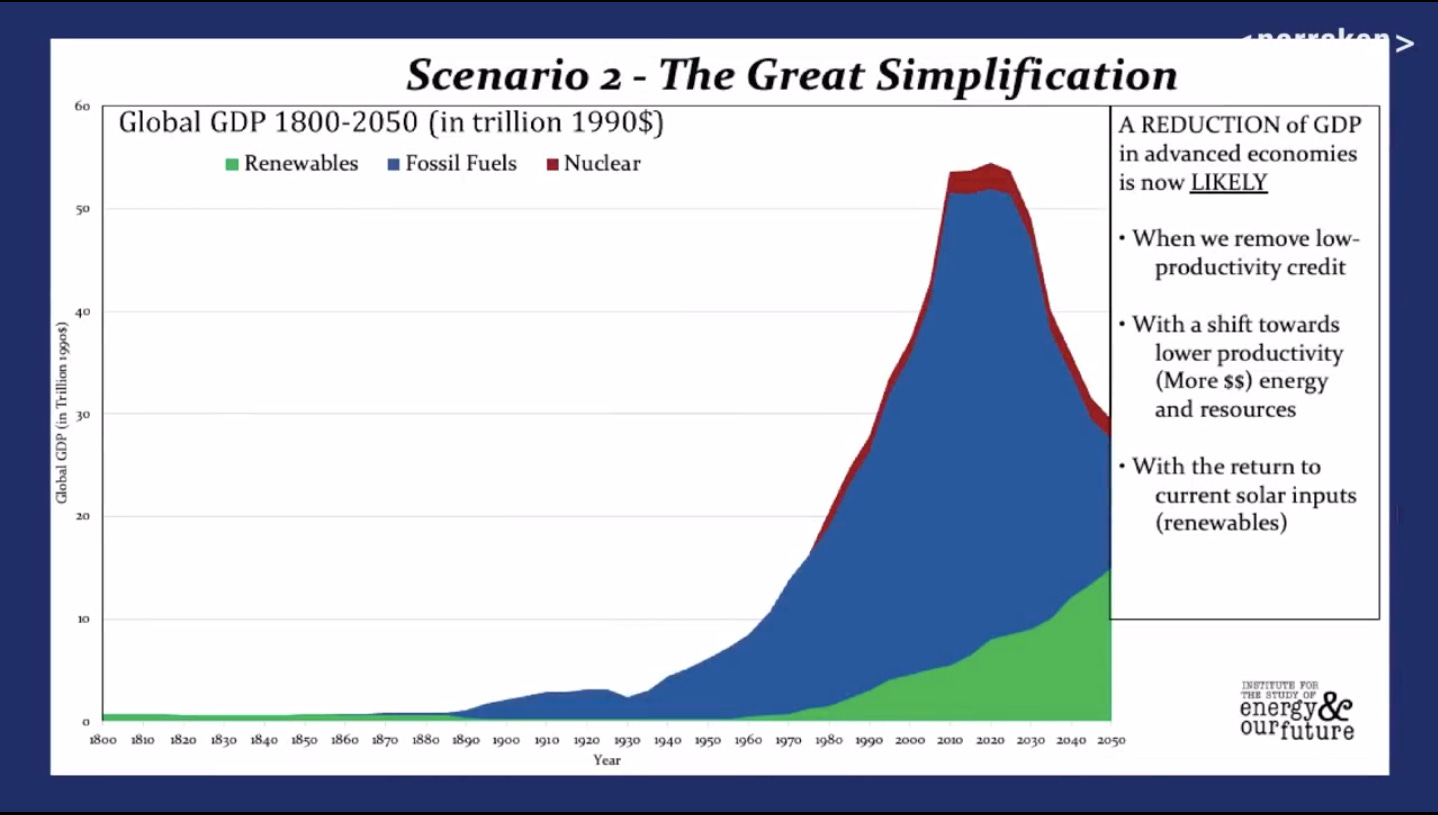
Fossil-hydrocarbons as a power source and raw material are superior and singularly versatile. They’re precious in a way that people who leap to vilify them don’t appreciate. Moreover, countries aren’t transitioning in a vacuum; external factors block societies from overhauling infrastructure, too. It’s no wonder nations and corporations aren’t rushing to transition to alternatives, and that after four decades of general availability, solar panels and wind turbines comprise only 5% of global energy.
Peak Oil Demand?
Whereas the concept of Peak Oil (Production) first appeared in the 1950s, people have only recently begun to use “Peak Oil” in reference to demand. For example, in 2015, Amory Lovins authored a blog post in 2015 with the tagline “Hitting peak oil will come faster than any of us think. But don’t blame dwindling supply — it’s all about disappearing demand”.
The not-so-alternative methods of industrial energy generation (and so far, they’re limited to mainly electricity generation) keep civilization reliant on on fossil-hydrocarbons. They’re an extension of the fossil-energy industry. Liquid fossil-hydrocarbons are required to produce the very energy-generators that engineers (mistakenly) expect will replace them. Therefore, we won’t ever see industrial civilization lose interest in fossil-hydrocarbons.
However, and maybe even more importantly, a decline in annual fossil-hydrocarbon production will limit humans’ ability to install and maintain “green”-industrial infrastructure. The net amount of diesel available to the world (subtracting the quantity involved in its own production) dictates how much industrial activity humans can engage in. This damper won’t apply in the distant future; net energy from oil liquids is plateauing now, with a potentially steep downward slope.
“The Productivity Trap”, a post on the Honest Sorcerer substack
Simon Michaux interviewed by Nate Hagens
Susan Krumdieck interviewed by Rachel Donald
Alice Friedemann interviewed about “Life After Fossil Fuels” by Rachel Donald
Review of Alice Friedemann’s “Life After Fossil Fuels: A Reality Check on Alternative Energy”
“There’s No Tomorrow” video on YouTube
UCSD astrophysicist Tom Murphy’s analysis of alternative energy’s features
“Our Renewable Future: Laying the Path for One Hundred Percent Clean Energy” Richard Heinberg and David Fridley




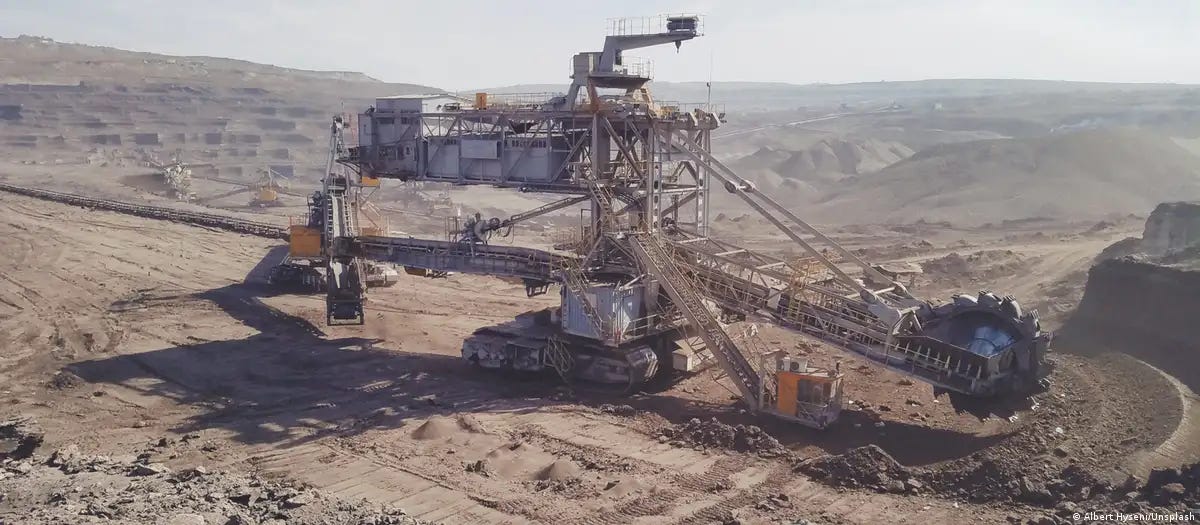

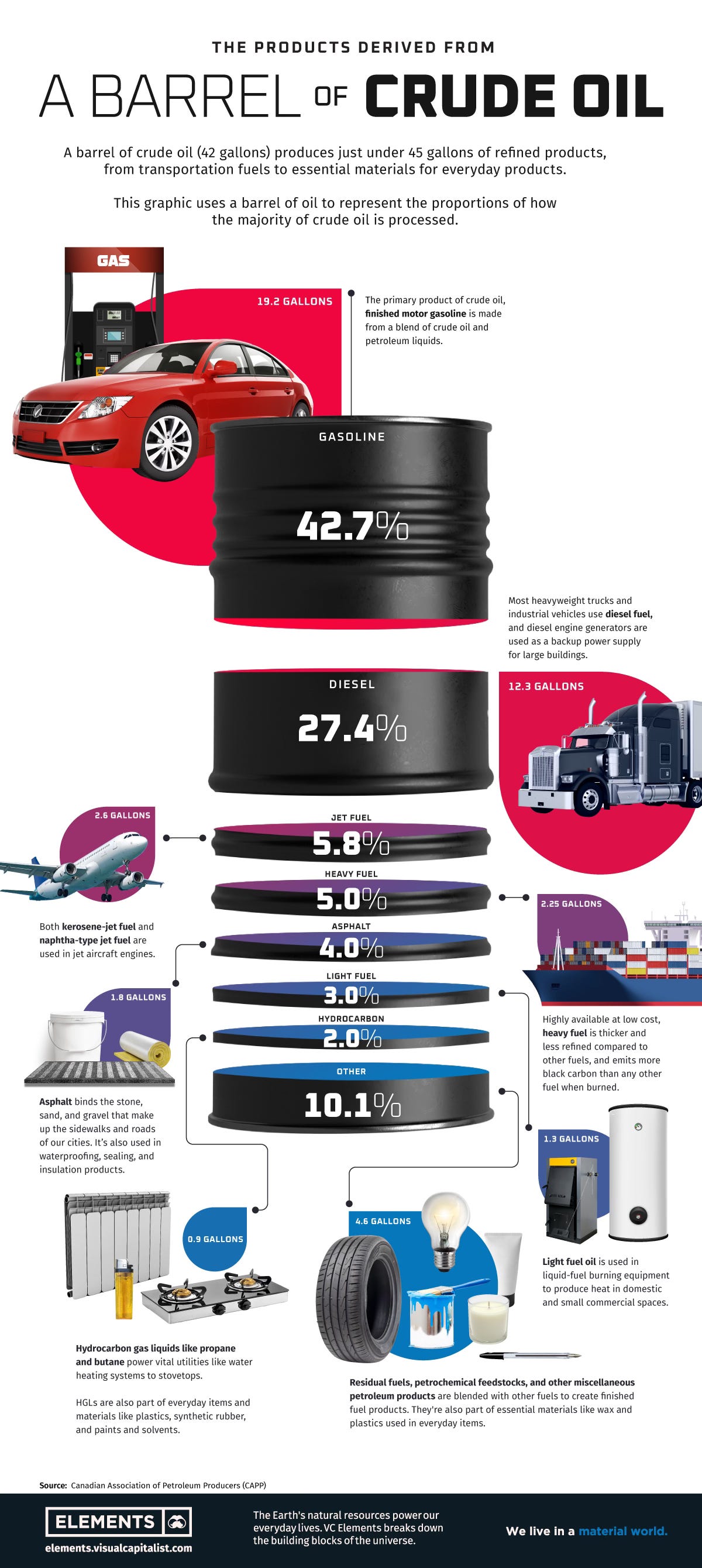

I work as an electrical engineer in my country's energy transition. Around 2040 we will colonize the sea, raising metal structures weighing hundreds of thousands of tons to generate, convert and transport energy to land. They are engineering marvels operating cutting edge technology near their absolute limits. Because of the hostile marine environment, every 40 years we will have to replace all of the hundreds of thousands of tons entirely. None of this is going to happen, but it's kind of awesome to see what the requirements are for making just the aspect of carbon emissions related to electrical energy "sustainable" and how much of material reality you need to ignore for the plan to make sense at all.
It's nice to see more folks getting this message out there.